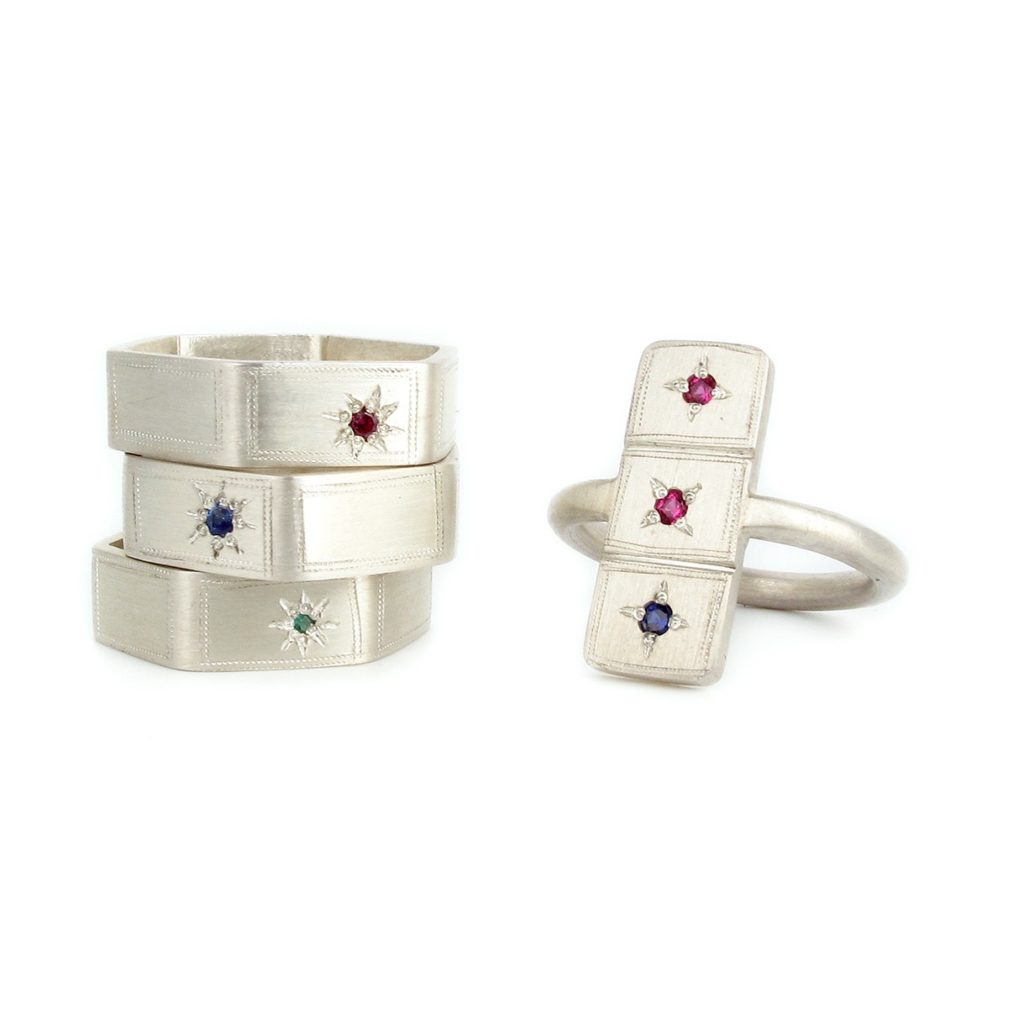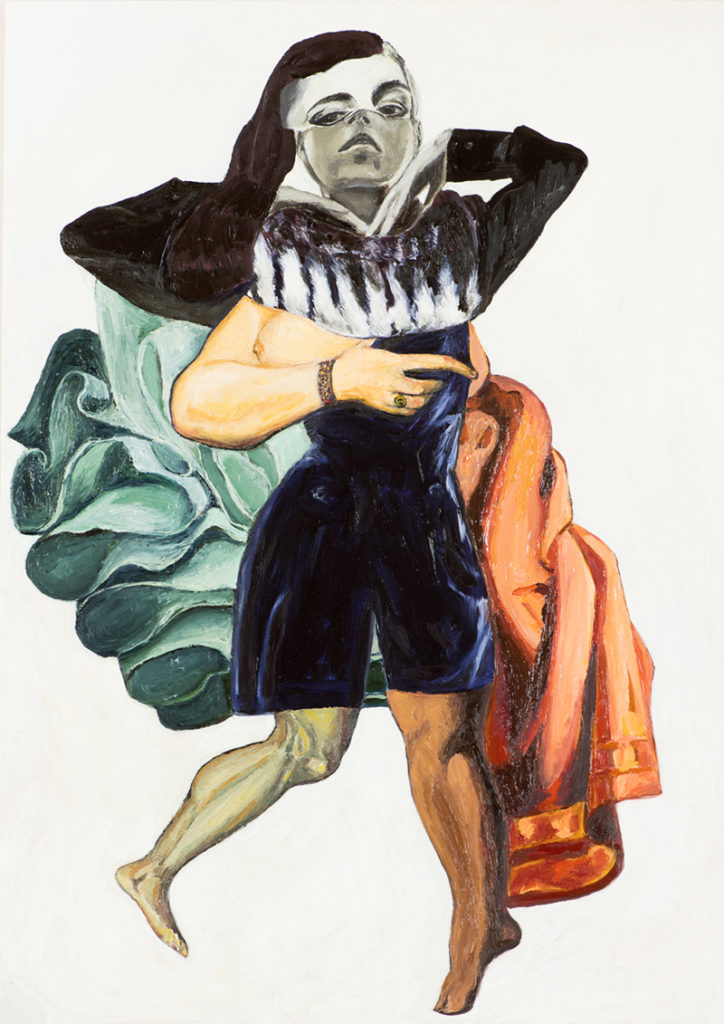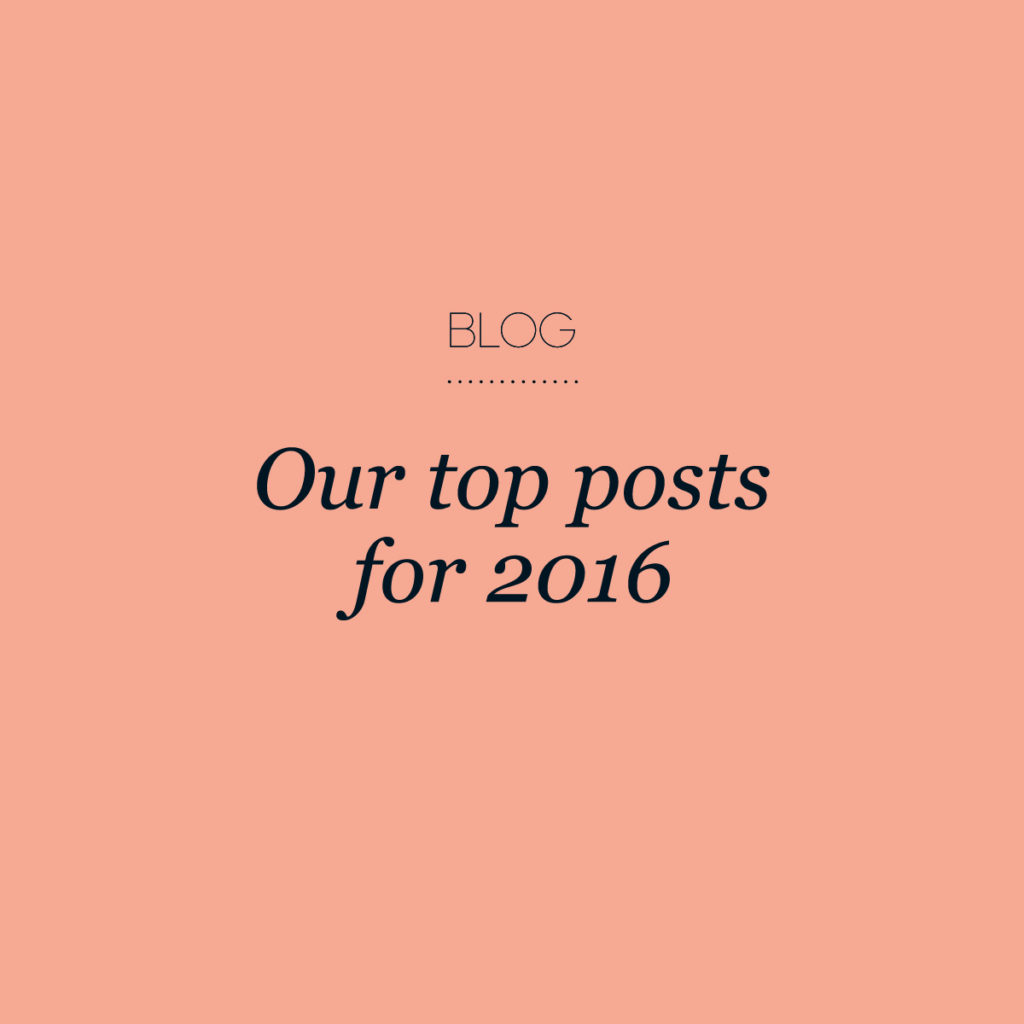Finalists' round up
Last week we shared our three winning submissions for our new membership cards. We were overwhelmed by the amazing response. The sheer number of quality entries which made it very hard for our judges on the CWC Board to narrow down. We therefore thought it only fitting to also share the work of our other finalists for everyone to enjoy.
We were blown away not only by the number of submissions we received, but also the wide range of styles of work! The backgrounds and professions of those who submitted perfectly sums up why CWC is so special, bringing together talented creative ladies across a diverse range of fields, from graphic designers, artists and illustrators to interior designers, architects and textile designers.
Scroll on down to check out their amazing work. Thank you to everyone who submitted. We are so proud of you all!
Our top posts for 2016
Can you believe it is nearly the end of 2016? Gah! I feel like I only just recovered from last Christmas. We are getting ready to take a well-deserved blog break over the holidays, so have prepared a round up of our top posts over the last year for your reading pleasure! Bookmark this post to read later on the beach, in a hammock, or on the couch over a glass of eggnog and the shortbread biscuits meant for Santa.
Small town creative: how to live, work and create in a regional area
By Jasmine Mansbridge
I am writing this blog post while also preparing for a trip from my hometown in Hamilton, Victoria, to Sydney. So it really is a good time for me to think about what is means to be a creative person living outside of the city and how I have gone about finding and generating creative work opportunities.
How to succeed as a multi-passionate creative
By Bec Mackey
Do you find yourself pulled in different directions by your work and your creative projects? Are you easily distracted by a new idea or flash of inspiration, only to abandon it again shortly afterwards? Or maybe you’re trying to juggle working and paying the bills with a creative side project, and finding it hard to manage both at the same time. You may beat yourself up for being fickle, unable to commit, or to make a clear decision. But despite what we’re told by society, not everyone is built to have just one linear career path, and being easily distracted isn’t necessarily a bad sign. If any of the above resonates with you, it may just be that you are multi-passionate.
Branding basics: Define your brand
What is a brand? A brand is more than just a logo. A brand is who you are.
There are five fundamentals that form a brand. One cannot exist without the other, and for a brand to be successful, the fundamentals must work together to communicate everything you think, say and do.
Project planning 101
By Jes Egan
Being organised is a skill. It’s something that you can learn and refine but it doesn’t always come naturally. I have always been an organiser since a very young age. Today in my day job, that is exactly what I do. I plan and manage projects from start to finish and all that stuff in between. You may be lucky enough to have a specialist around you who will do this, or like many small creative businesses have to become a bit of a jack of all trades and apply this skill to what you are doing. Here are a few of my tips to help plan away.
How to quit your day job
By Emma Clark Gratton
You’ve been working on a creative side gig alongside your main job for a while now. You’ve got a few regular clients, are making money and are in demand. Most of all, it’s so fun and rewarding that you spend all your lunch breaks and evenings working on your ‘hobby’. If this sounds like you, it might be time to take a leap and pursue your creative project full time.
Read more...
Creative blues: five common fears and how to beat them
By Emma Clark Gratton
Working for yourself or passionately following a creative project requires a level of mental toughness and self-confidence that is hard to maintain. Dealing with rejection, financial challenges, working long hours with just yourself as taskmaster… all these things can build up until you are having an existential crisis before your morning coffee.
Winning submission announcement!
So we are now excited to unveil the winning designs, as voted in a secret ballot by the CWC board. These designs will be featured on new members cards sent out to all new members from early in the new year. Each of our board members said choosing their favourites was one of their toughest responsibilities yet! Next time, we think we will share the load and ask our members and followers to share!
There were so many diverse and excellent entries. Stay tuned for a post next week sharing the other finalists!
Claire Ritchie, print design and illustration.

Join our blogging team!
 For the last few years, we've been fortunate to have had a wonderful array of talented, creative ladies on our team as bloggers.
For the last few years, we've been fortunate to have had a wonderful array of talented, creative ladies on our team as bloggers.
Writers, designers, artists, small business experts... The one common thread amongst our bloggers - past and present - is their passion for sharing what they know with the wider creative community and their desire to meet lots of inspiring women and creative minds in the process. Their contributions have made the CWC website what it is - a rich and robust source of information and information for women in creative businesses. I can't thank them enough for the expertise they have shared and the time and thought they put in to their posts.
As we beginning preparing for 2017 (gulp!), we're on the lookout for a few new voices to add to the current blog contributor team. We would especially love to hear from people who enjoy writing interviews, studio tours and 'how to' posts. All bloggers are paid $50 per post.
If you'd like to join our team, email Emma with a introductory email and links to your own blog/social media to start the conversation.
Industry insights: Game on
by Annette Wagner PAX Australia is the ultimate celebration of all things gaming, technology, and culture. This premiere video game convention was held over three days at the Melbourne Convention and Exhibition Centre, closing yesterday. So what has this to do with CWC?
When I think gaming, I don’t often think of women, but there are increasing numbers of women who work in this industry. According to Giselle Rosman, it’s an industry that is growing quickly as technology continues to change our lives.
Giselle kick-started her games career in 2007, and has worked tirelessly across many aspects of the gaming industry. She currently runs the Melbourne chapter of the International Game Developers Association and is an advocate for women in gaming.
How did you end up working in the game industry as a business administrator at Hipster Whale and executive producer of Global Game Jam?
I had been working as a games educator from 2007 to 2009, a job I’d heard about from a friend when I was itching to get back to work after having had two wonderful children. It wasn't a great time for the Australian industry, with lots of studio closures and very few graduate opportunities for students. Along with some friends, we rebooted the International Game Developers Association Melbourne Chapter (IGDAM) in November 2009. We still meet monthly and have more than 100 game developers attending each time.
Through IGDAM I started running the Melbourne Global Game Jam in 2011, and got more involved on a global scale each year in a voluntary capacity. I was asked to join the executive committee and then had a stint on the board before taking on the executive producer contract in 2015.
I also got to know Matt and Andy of Hipster Whale “before they were famous.” When Crossy Road took off, I offered my business administration skills when they needed them.
What sort of training did you complete, and what program knowledge did you need, to start working as a business administrator and executive producer? My roles in games are a bit “left field,” as is my formal training. I completed an advanced diploma of business administration back in the day, and have fallen into event management roles though my career and hobbies.
As a business administrator and executive producer, what does your job involve?
For Hipster Whale I do general admin tasks, including accounts management, HR, and dealing with office management and email enquiries. I've also been involved in setting up and expediting merchandising plans, and working with film and television studios that are interested in having Crossy Road in their productions. It's been wonderful to see Crossy Road arcade machines pop up all over the world, and to know you had something to do with that.
Global Game Jam is a people and time-zone management role. The buck stops with me for running a 48-hour game-making “hackathon” in January, which in 2016 was held in 93 countries over more than 630 sites. This involves a lot of project and people management, looking after sponsors, and managing social media and the website (globalgamejam.org), about 40 regional organisers, and more than 600 participants (jammers). We have a very busy Slack at peak times!
Game designers often create video games as part of a team. They come up with the game’s concepts, characters, setting, story, and game play. Designers must work with artists and programmers to create the scripting language and artistic vision for a game. Do you have any tips for managing the creative collaboration process?
I am only very peripherally involved in any creative processes with relation to game development, but I do work in a small team at Hipster Whale, and a big team with Global Game Jam, and it always comes down to two things: communication, and respect for your colleagues.
Do you use any apps or project management and time saving processes to remain agile and manage such a multidisciplinary process? I live in Slack and Trello, mostly, with a hefty side-serve of Google Drive. I live by lists!
Game development can be a highly complex, intensive process lasting two years or more, requiring teams of programmers, artists, project managers, writers, musicians, and many others. What projects have you worked on and how long have they lasted?
While I don't directly make games, I was involved in the development of Disney Crossy Road, a process that took twelve months. Given that the original Crossy Road was developed in twelve weeks by three people, it was quite a different process. Working with a publisher like Disney was a great experience, too. The opportunity to visit Pixar when I was in California last March for the Game Developers Conference (GDC) was a special treat.
We also worked with another studio, 3 Sprockets, and Bandai Namco on the release of Pac-Man 256. The process for the original iOS and Android launch took around six months. It's since been ported to Playstation 4 and XBox One.
Global Game Jam takes about nine months of preparation. The first five months are relatively low-key, then the next four are a whirlwind of managing and coordinating all of the elements and organisers involved in such a big and regionally diverse event.
What percentage of the game industry is female? Is this changing? If so, how?
I did some research about three years ago and found that just over ten percent of the Australian games industry identifies as female. Looking at the number of women studying games, there is certainly potential to improve this ratio. There are a lot of great people looking at how to address this imbalance and creating events and spaces for women and girls to get comfortable with game development. Programs like She Makes Games have the potential to inspire the next generation of women in games.
Are some games predictable in their representation of women? Is this likely to change with women behind the scenes?
In short, yes, the representation of women in games is often lazy and relies on clichés and two-dimensional window dressing, with some notable exceptions. I do believe that by including more women in the creative development process, the representation of women can be improved. If you have more women writers, for example, it means their characters will be developed with a closer personal understanding of the nuances and range of what it means to be a woman or girl.
Is there a focus on games made especially for women?
There are games made with women as their primary target market. The industry is recognising that women make up around fifty percent of the market (which is no great surprise, given that play is not a gendered thing). The other market segment that's often overlooked—despite accounting for a sizeable market segment—is more mature game players. The average age of video game players is 33 years. Not 15. Not 20. The industry is learning this. I think in the future more games will be made to meet the needs of a greater range of market segments, especially women and older game players.
What are your predictions for the game industry?
The games industry is always changing rapidly in terms of processes and tools. Recently, the rise of VR [virtual reality] is notable, and that's not going anywhere any time soon. The use of both VR and more traditional game design techniques in areas like “serious games” will continue to increase. And the integration of game design methodology into non-traditional game spaces, such as advertising and marketing, will also increase.
Annette Wagner is a designer, marketer, creative consultant, artist, and writer. She is also on the board of the Creative Women’s Circle. Obsessively passionate about the arts and the creative process, she is determined to not talk art-speak and instead focus on supporting and sharing concepts and insights most creative types crave to know.
Podcasts for creatives
 We love podcasts here at Creative Women's Circle. The combination of narrative storytelling + in-your-ear intimacy + inspiring interviews makes podcasts the perfect medium for busy creative ladies. Stick your earbuds in and get a dose of creative inspiration while you are working, wandering or waiting.
We love podcasts here at Creative Women's Circle. The combination of narrative storytelling + in-your-ear intimacy + inspiring interviews makes podcasts the perfect medium for busy creative ladies. Stick your earbuds in and get a dose of creative inspiration while you are working, wandering or waiting.
Here are some of our faves...
Design Matters
Running since 2005, Design Matters is (probably) the world's first design podcast. Host Debbie Millman interviews designers, creators and big thinkers from Alain de Botton through to Lisa Congdon.
Must listen episodes: Amanda Palmer, Oliver Jeffers, and Chip Kidd
After the Jump
Hosted by Grace Bonney from design blog behemoth Design*Sponge, Grace and her guests give nitty gritty business advice on branding, the real cost of business and how to make the most of social media. They also dive into the inspirational and emotional side of creativity and business with talks on work/life balance, productivity, finding your voice and living the life you want.
Must listen episodes: Sex and the City designer Lydia Marks, The Hidden Costs of Independent Design, and 10 Habits of Healthy and Happy Business Owners
The Jealous Curator's Art for Your Ear
Behind-the-scenes info and news about talented contemporary artists. Host Danielle says 'You'll hear first-hand from these talented, successful, full-time artists (who also happen to be regular people with hilarious stories) BEFORE they’re in the Art History books.'
Must listen episodes: Lisa Golightly, Terrence Payne, and Erin M Riley
The Lively Show
The Lively show is a weekly podcast designed to uplift, inspire, and add a little extra intention to your everyday. Episodes touch on various aspects of our lives including possessions, personal habits, relationships, and career. Entrepreneurship and online business also appear from time to time.
Must listen episodes: My Top 10 Lessons From My “Lively Adventure”, Fulfilling Your Soul in a different, creative way & Impostor Syndrome with Jasmine Star, and How to take big + small steps towards a zero waste lifestyle with Bea Johnson
The Moth
Not about creativity per se, The Moth is a collection of recordings from live storytelling events around the world. It has been around for years and is full of hilarious, poignant and surprising observations.
Must listen episodes: The Lollipop Boy, Hitchhiking, Mosh Pit, and Iggy Pop, and To Bid or Not to Bid
Conversations
Incredible conversations with Australia's best interviewer Richard Fidler, these podcasts cover everything from history to science, celebrities to ordinary people. Conversations is released four days a week and features people from all walks of life.
Must listen episodes: Jon Ronson: public shaming in the digital age, James Earl Jones beat a childhood stutter to build a career on his voice, and Helen Razer champions rational thinking
The New Normal
Okay, so obviously we are biased as The New Normal is hosted by myself and CWC President Tess McCabe, but we chat to many excellent mothers about all things creativity, business and parenting. There's something there for both parent and non-parents alike!
Must listen episodes: CWC members Martina Gemmola, Annette Wagner and Julia May
Industry insights: Anais Lellouche, curatorial director
As I continue my Industry Insight quest to explore, discuss and spotlight the many diverse creative industries women are leading and making their mark in, I wanted to feature a career that has been on the my list of 'what I want to be when I grow up' for a long, long time: a curator.
Before speaking with Anais Lellouche, curatorial director at Anna Schwartz Gallery, I knew there was much more to being a curator than what Charlotte on Sex in the City alluded to.
Read on to share her insightful feedback on how Anais become a curator, what the role actually involves and five tips for how an artist finds gallery representation.
What lead you to become a curator?
I was very fortunate to have had a passion for art from a very young age and I started gaining experience in the field at the age of 16 years. I knew I would work in the arts but was not exactly certain in what capacity, whether as an artist, gallerist, in a museum, or auction house. So I tried them all! This is how I found my way; I kept moving ahead with experiences in the field until it felt right.
In a contemporary art environment, a curator is a person who selects and often interprets works of art. In addition to selecting works, the curator is often responsible for many other aspects, and it is by nature a multi-tasking role. What does your role as a curator at Anna Schwartz Gallery involve?
Anna Schwartz Gallery is a very special place, which has been the home for leading contemporary art in Australia for over 30 years. My role is to support artists in the presentation of their works, whether at the gallery, in museums or with other projects and commissions. The best part of my role is working closely with artists and external parties and to develop opportunities for them to create and exhibit their work. I am fortunate to work closely with the founder, Anna Schwartz, and to draw from her relentless enthusiasm and experience supporting artists to achieve their visions, with no compromise.
You recently collaborated with Chiharu Shiota, for her inaugural exhibition at Anna Schwartz Gallery and Public Art Commission of the Melbourne Festival. How did this collaboration come about, what was your role and do you have any recommendations for managing a creative collaborative process?
Jonathan Holloway, the Artistic Director of the Festival had been interested in Chiharu Shiota’s work for many years and since the gallery represents her, it was a natural collaboration. The articulation of gallery space and public space offered the possibility for the artist to showcase different parts of her practice and thereby reach a wide audience. Shiota’s projects were a real collaborative effort from the early stages, working with engineers to ensure that the 7 metre tall mobile home the artist wanted to create was achievable, all the way through to the students and volunteers who worked with the artist to create the installations.
My recommendation for managing a collaborative process applies to any other profession: trust your instincts, pay attention to detail and approach this role, not as a job, but as if it were your very own project.
Pictured, curatorial director, Anais Lellouche and artist, Chiharu Shiota. Courtesy of the artist and Anna Schwartz Gallery. Photo by Zan Wimberley.
Temporary exhibitions increase in cultural importance, just as the traditional role of galleries and museums with well known and established collections follow the call for ever changing exhibitions as well. What are the challenges of curatorial strategies when planning future exhibition programs?
Galleries support artists in the long term and our exhibition programs are more consistent as a reflection of this commitment. That being said, I am also animated by developing new relationships and dialogues for the artists we represent alongside other leading international artists; to exhibit artists for the first time in Australia and to support and expand the local cultural scene.
Can you provide 5 tips for how an artist finds gallery representation?
1. My first tip would be to develop a unique voice. To gain experiences in different cultural contexts, through travelling, but also through research, stepping beyond the local field of expertise and interest, to nurture an original approach.
2. Another tip would be to socialise and develop a networks of peers; to show your work; to discuss ideas, and to share a cultural life together.
3. Don’t be too eager to be represented by a gallery, it is preferable to be ready and to align the right match; this often takes time.
4. Believe in yourself wholeheartedly; because if you don’t, no one will.
5. And lastly, be resilient, and never, ever let go.
Annette Wagner is a designer, marketer, creative consultant, artist and writer. She is also on the board of the Creative Women’s Circle. Obsessively passionate about the arts and the creative process, she is determined to not talk art-speak and instead focus on supporting and sharing concepts and insights most creative types crave to know.















